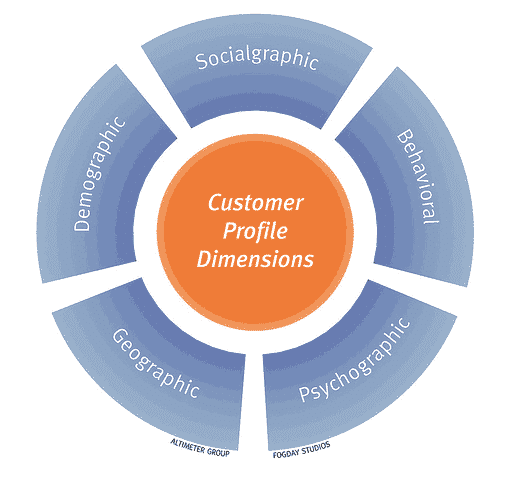During consultation meetings with my clients, I often notice the enthusiasm and excitement as they share about their products and services. However, when asked if they have identified a specific target audience, some are very clear about who they are while a small number either say, “not really” or “anyone out there.”

This is not an unusual situation. Many businesses fail to meet their sales or get business leads precisely because they have not given enough thought on their specific target audience. Of course some people may ask why some companies are able to target anyone. Well, the answer my friend, is because they have built their brand over a long period of time and well, you haven’t. To quote Peter F Drucker, “The aim of marketing is to know and understand the customer so well the product or service fits him and sells itself.”
The question is then – why do we need a target audience for our campaigns? Can’t we just fire the cannon (issue a mass press release or create social media advertisement) and aim to reach multiple groups of people as possible? The short answer is you can, but you may also have the perfect recipe of losing them altogether. Having a specific target audience will help us to craft our communication messages to the specific audience.
In this article, I will share how to identify our target audience and the chances of you losing your intended customers if you don’t go through this process.
Let’s start with the obvious. What is a target audience? A target audience is a group of people who may be interested in your product and service. They are usually grouped by similar demographics, socialgraphics, behaviour, geography, and psychographic.

For example, if you are a boutique PR agency, one possible target audience will be those who are looking at small, cost-effective, possibly ad hoc and short term PR campaigns. If you are an early childhood education consultancy offering literacy programmes, then your target could possibly be parents of young children aged between five to nine years old who need help getting their children to read and write. When you are able to identify your target audience, it makes your communication messages easier to craft.

Once you have identified your target audience, then comes the question of why do you need them? It is simple. My teenage daughter is easily sold on K-Pop albums. She would troll the album reviews or read articles relating to the K-Pop stars online and trust several influencers who rave about the new song, new dance moves or even news of their favourite pop stars before making a purchase.
When you are clear about your target audience, you know your products and services will appeal to them. It will also make it easier for you to craft your press release, blog articles, stories and advertisements targeted precisely at this group of audience. When running a social media advertisement, knowing the demographics and their habits including purchasing power can help you develop a better ad set. Of course, this requires you to do a bit of snooping and research.

There are several ways to identify your target audience. One is to collect data from your website analytics. Notice your website visitors profile such as profession, gender, geographic locations and sections of your website they tend to visit more often. If you have a social media channel, observe similar patterns from your connections who engage with your content. You can also observe their pain points and issues they engage and discuss. Your competitor is also a good source. If you are offering similar products or services, check out their clients list and start your marketing campaign by targeting similar demographics.
Next, we address the question of whether having more than one target audience is okay. Going back to the K-Pop example earlier, while my teenage daughter is one target audience, I know of many of my friends in their 40s who are crazy over K-Pop stars as well. So yes, you can definitely have more than one target audience. The thing to note is that your messages need to differ or tweaked to appeal to this age group.
Similarly, when you have more than one product, and you want to appeal to multiple audiences is possible. However, you need more effort in producing various communication materials to meet the needs of the varied target audience. I would suggest however, that every PR and marketing campaign has their own set target audience and communications set for different audiences for better performance.
After you have done a thorough research of your target audience, you can develop an audience persona statement for your target. For example, for my agency, our persona statement is:
“Our target audience consist of new and seasoned small business owners and entrepreneurs, specifically in the early education sector, home businesses, health and lifestyle business and family food business who are between the age of 30 to 60, in Singapore and Malaysia, who needs an extended PR and marketing arm to help promote and raise their brand visibility on both traditional and new media.
Our cost-effective and no-frills pricing and professional team can help our busy clients meet their campaign needs without burning a hole in their pocket.”

Of course, for every campaign, you will need to test it and see if it works. Evaluate it on different fronts and see what needs to change to meet the marketing goals. It is also common to not meet your goals at the first and second try. That is where you probably need to adjust some of the attributes and communication messages and make it better. Some of the things you can look out for are:
- Do the contents and images resonate with your clients?
- Are the target audience engaging by asking questions and bringing in leads and conversions?
- Do they go to your website and act on your “Call to Actions.”
- Are the website, social media statistics, ad sets and outcomes giving any insights or meeting your expectations?

Once we are able to get some answers from these questions, we can start analysing them. Apply these new found results and re-set your target audience for better campaign results. With changing trends and technology, customer habits change and thus, we have to always reassess the communication messages to fit them at the right time. You can either do a regular review of your campaign results every three, six or 12 months.
Remember that by having a targeted specific audience, it will help you focus your marketing campaign. It will also allow you to focus on the right group at any one time and achieve better outcomes. If you find it a little challenging on identifying a target audience, consider the above steps or engage a marketing agency to help you identify and work on better results for your campaigns.
On a similar note, there are also many digital and marketing training companies who provide in-depth knowledge on how to identify your target audience for specific campaigns.
5 Tips On Creating Your Own Coaching Program
Kartina is Marketing In Asia's Editor for Op-Ed. She is also the Founder of Tin Communications. A media specialist with over 20 years of experience in both public and private sectors, she helps SMEs grow their business through strategic media and marketing plans. Connect with her on LinkedIn. You may also reach her by email at kartina@localhost.



















